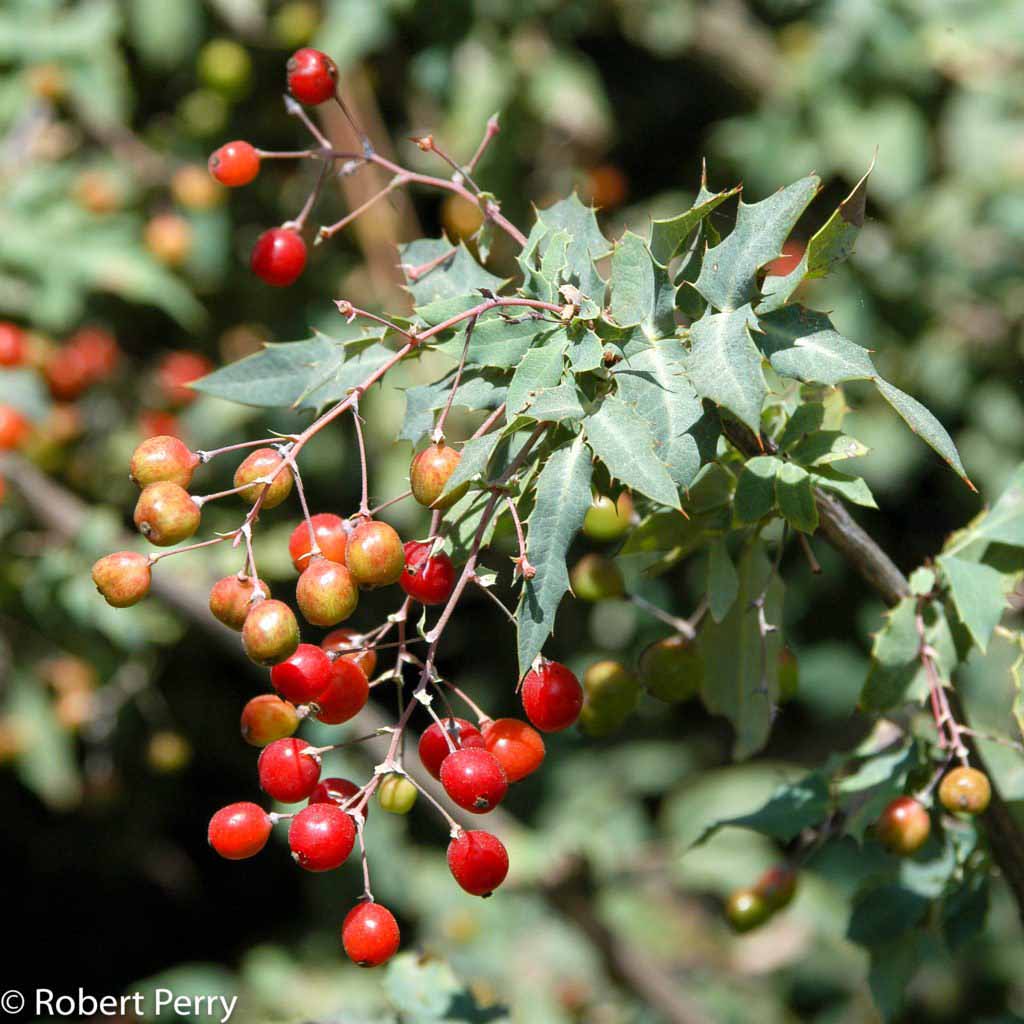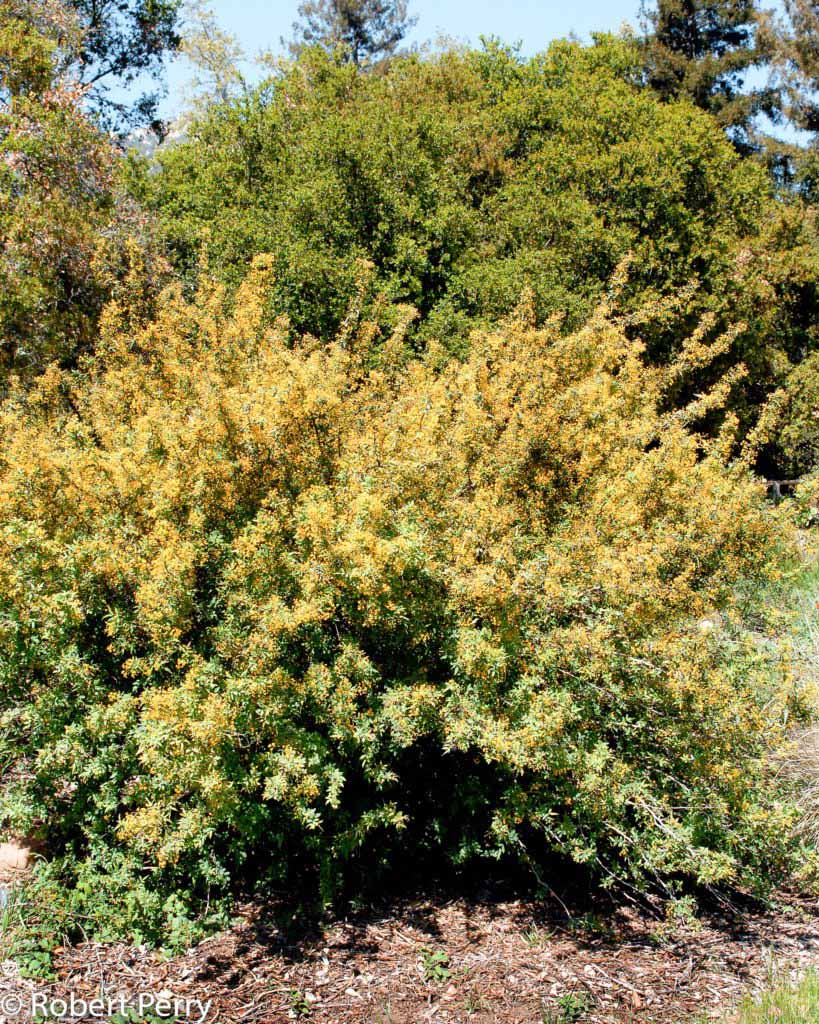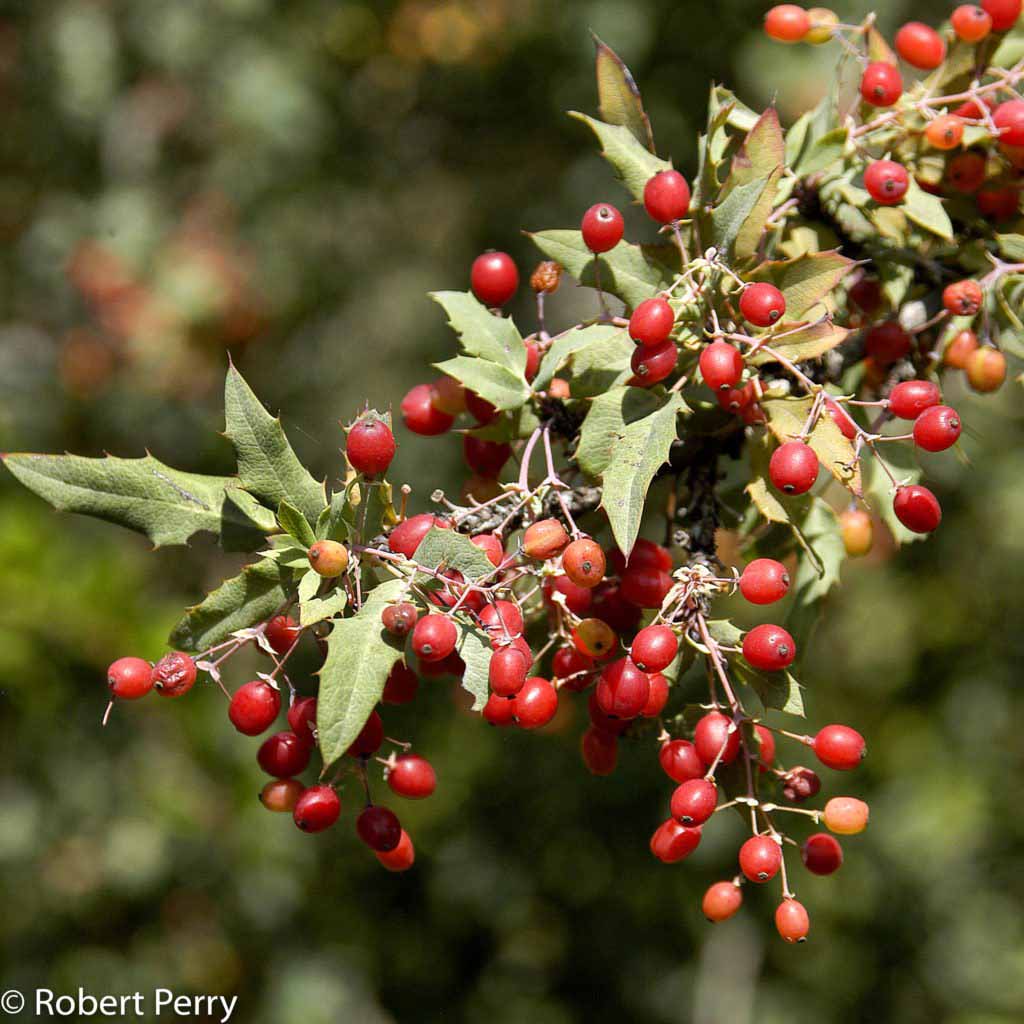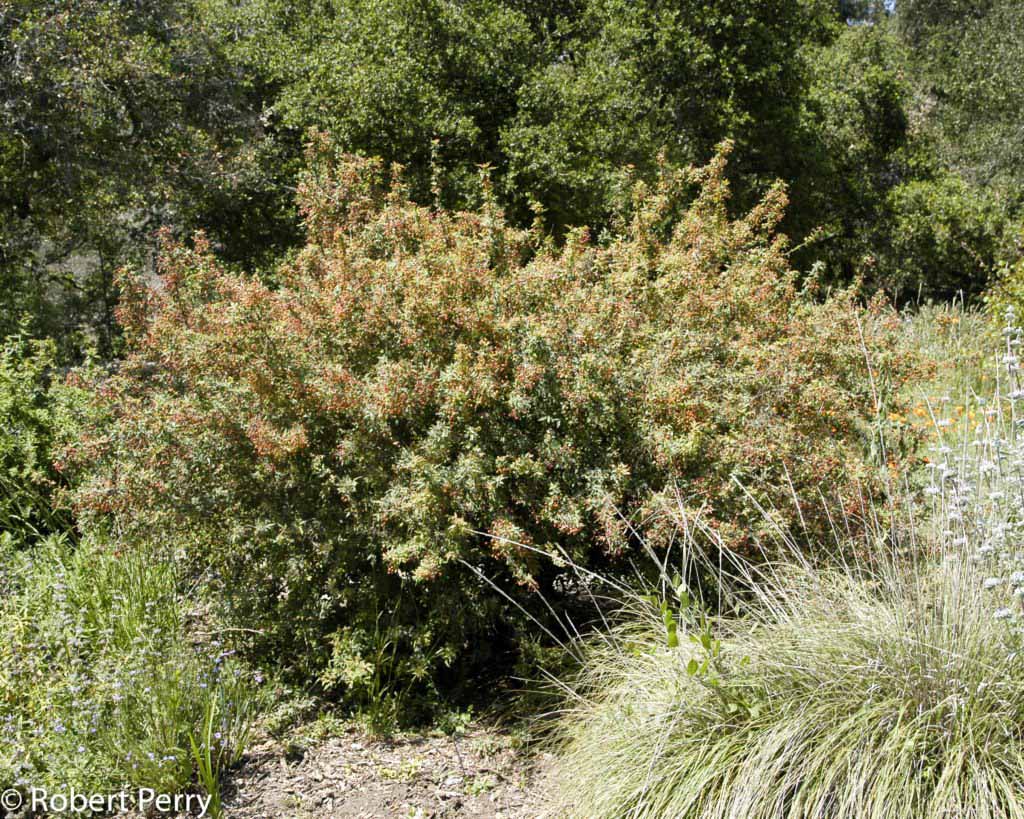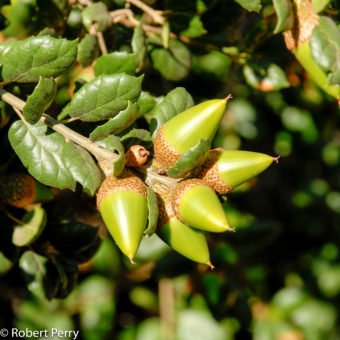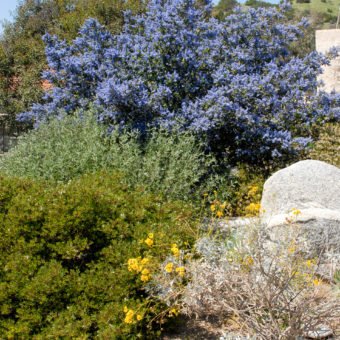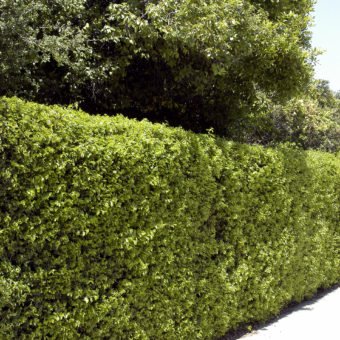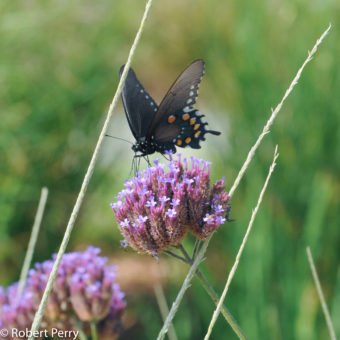Nevin’s barberry grows into a medium to large size evergreen shrub growing 8-12 ft. tall and as wide. Distinctive pale blue-green foliage is comprised of prickly leaves that are divided into 3-5 leaflets and have sharp spines on the margins. Colorful clusters of showy clear yellow flowers occur in spring; colorful fruit is yellow to red and of value to wildlife.
This tough California native species is quite rare in natural distribution, occurring in only a few locations in Southern California. It is naturally adapted to well-drained sandy soils, full sun and extended periods of drought. In Inland Empire gardens and landscape plantings it needs room to grow and is mostly used in California native gardens as a large background and screen plant, and for attracting wildlife to its flowers and berries. It is a slow growing plant that takes many years to reach mature sizes.
